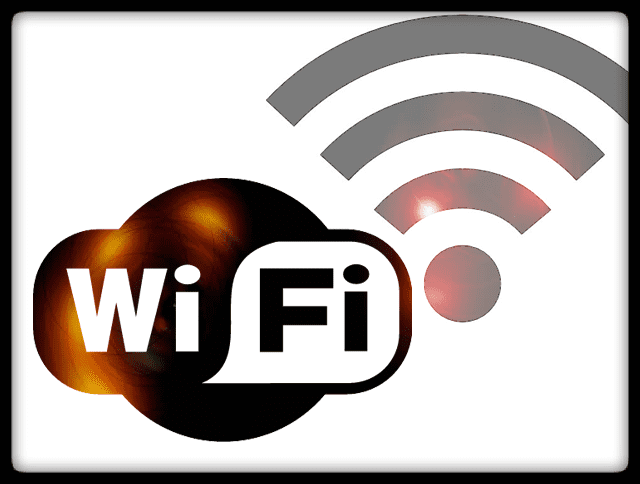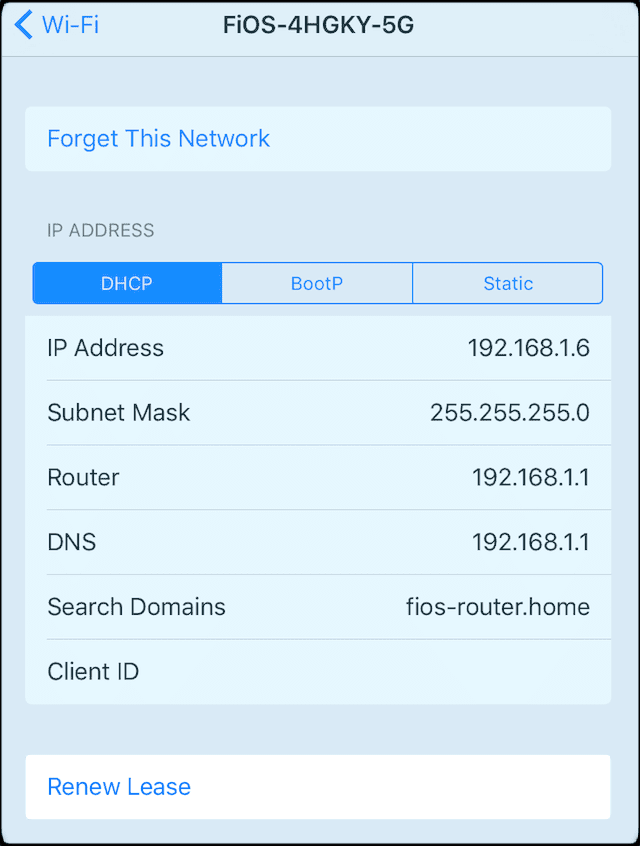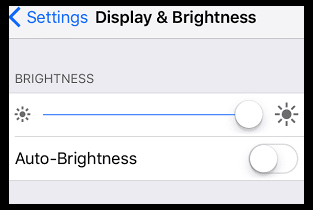For many of us, the number one thing we do with our iPads is browsing the internet! So if your iPad isn’t connecting to WiFi and pages aren’t loading, it’s a very big problem indeed!
Learn what to do when your iPad has WiFi issues and won’t connect to WiFi. And fix it in a jiffy!
Contents
Quick Tips 
Follow These Quick Tips To Fix When Your iPad’s Not Connecting to WiFi
- Update your iOS
- Toggle WiFi off, wait 20-30 seconds, and then toggle back on
- Restart your iPad and/or your WiFi Router
- Unplug your Router, wait a few minutes, and plug it back in
- Forget your WiFi network and reconnect to it
- Reset your network’s settings
- If possible, change your WiFi security settings
- Reset all your device’s settings
Related Articles
- Having WiFi Connection Issues With Your iPad Pro?
- How to Share Your WiFi Credentials or Connection From Your iPhone
- Safari Not Working on Airport, Hotel, or Public WiFi? How-To Fix
- WiFi Dropping Out or Not Available After iOS Update, How-To Fix

The Fine Print
Unfortunately, there is not one universal fix for this issue. There are a lot of reasons while our iPads can’t connect to the internet.
We’ve attempted to correspond each problem with a set of fixes, but specific fixes may work to resolve issues other than the one under which they’re listed.
If the fix listed under a particular issue fails to resolve your problem, work through the full list.
Recognize The Symptoms of iPad Wi-Fi Issues
Fix Dropped Connections and Forgotten Passwords
Your iPad intermittently drops its WiFi connection, forcing you, the user, to reconnect.
In some cases, you are even asked to enter your password again and even AGAIN.
This problem is especially prominent with the Actiontec routers provided with Verizon FIOS and others.
- Switch DHCP to manual
- Tap Settings, then go to the WiFi section. Tap the blue, right-facing arrow next to the WiFi network you are currently connected to, then tap DHCP. In the HTTP Proxy section, select “Manual.” Don’t enter any additional information

- Exit Settings, now check for an alleviation of WiFi issues
- If no change, restart your router after making this change
- If still no difference, other readers suggest switching HTTP Proxy to Auto (the default setting is “Off”)
Renew DHCP Lease
- Tap Settings, then WiFi
- Tap your WiFi network name or the blue “i” or arrow next to your currently connected WiFi network
- Choose “Renew Lease”

Turn AirPort off then back on
- Tap Settings on your iPad, then select WiFi
- Toggle WiFi OFF
- Wait 20-30 seconds
- Toggle WiFi back ON
Forget network then rejoin
- Tap Settings on your iPad then select Wi-Fi
- Choose the network you are experiencing difficulty
- Select “Forget this network.”
- Go back to the previous screen and rejoin that same network
Change security and channel
Change two key settings dramatically reduces the number of drops with routers any may even eliminate the drops altogether.
Follow these steps:
- Login to your router’s configuration page by opening a browser window and entering the address 192.168.1.1 (you may need to enter the username: admin and password: password1)
- Change the channel from automatic to 6
- Change the security setting from WEP to WPA
- Applying these changes causes your router to reset
- Turn your iPad OFF then back ON
Fixing Data Throughput Suddenly Stopping
With this problem, data suddenly stops flowing through your iPad’s WiFi connection, even though the connection appears active (i.e., signal-strength bars are still displayed in the iPad’s upper-left corner).
This problem is especially likely to occur during the use of data-intensive applications such as YouTube and Netflix.
Turn off auto-brightness
We didn’t believe this could work, but it does! Go figure that one.
To do this, tap Settings > Display&Brightness. Slide the auto-brightness option to off.

Adjust brightness upward
Likewise, this issue sometimes resolves by simply adjusting the iPad’s brightness level upward and off the lowest setting.
To do this, tap Settings > Display & Brightness. 
Slide the brightness bar upward, then wait 1-2 minutes and check for an improvement in signal strength.
We speculate that a power delivery issue associated with screen brightness somehow impacts WiFi signals and strength.
Fixes when not reconnecting to a network after sleep (i.e., forgets the network)
In this problem, the iPad does not automatically reconnect to a previously connected WiFi network when it wakes from sleep, forcing the user to open Settings and reselect the network.
Exhibiting proper behavior, the iPad should rejoin the network with no user intervention.
Adjust brightness
Still odd, but remarkably effective. See instructions above under “Data throughput suddenly stops.”
Bring up power off screen, but don’t power off
Another odd workaround: when your iPad forgets a network and prompts for the password, instead of entering the key, press sleep/wake/power button until the iPad shows “Slide to power off,” then press cancel.
This causes the iPad to reconnect to the network automatically.
Fixes for Weak signal/slow data transfer
This is probably the most common problem afflicting iPad owners.
But it’s also the one with the largest number of potential causes and therefore the largest list of possible fixes.
In this problem, users report fast connections and throughput from Macs, PCs, iPhones and other devices connected to the same WiFi network, but significantly degraded speeds and/or fluctuating signal strength on the iPad.

Reset network settings on iPad
On your iPad, open Settings, then navigate to “General” in the left-hand pane. Scroll down and tap Reset, then select “Reset Network Settings.”
This will delete any stored WiFi passwords and other information but may result in a more stable connection.
Adjust brightness upward
Yup; still odd, still effective. See instructions above under “Data throughput suddenly stops.”
Change thresholds in router settings
Access your routers configuration screen (for most routers, open a browser and enter the address 192.168.1.1), then change the fragmentation threshold and the CTS/RTS threshold as described here.
Some users have found success with the settings Fragmentation= 2048, RTS = 512.
Change 802.11 specs on the router
Try changing your router’s wireless spec mode from B, G, and N to G only or vice versa.
For AirPort routers, this can be accomplished with the AirPort Admin Utility.
For other routers, this can usually be accomplished by accessing the router’s configuration page — open a browser and enter the address 192.168.1.1.
Switch routers
Although a far-from-ideal solution, some users have found success in switching to a different wireless router.
Turn off “Ask to Join Networks”
To do so, tap Settings on your iPad, then select “WiFi” from the left-hand pane.
Slide “Ask to Join Networks” to off. Speculation holds that leaving this option on causes the iPad to continually seek networks, resulting in some interference with the network to which it is connected.

Forget network then rejoin
Tap Settings on your iPad, then select Wi-Fi from the left-hand pane.
Choose the network with which you are experiencing difficulty, then select “Forget this network.”
Go back to the previous screen and rejoin the network.
Turn off Bluetooth
Some users report that, perhaps due to interference issues, turning off Bluetooth can boost Wi-Fi signal strength.
To do so, tap Settings then tap General in the left-hand pane. Tap Bluetooth in the right-hand pane, then slide to off.
Reader Hacks, Tips, and Tricks 
Use a Static IP Address
Heath suggested that iFolks change their IP Address to a static one.
Heath set up his iPad with a static IP address on of 192.168.1.145.
And set the subnet mask to 255.255.0.0, with the gateway and DNS servers at 192.168.1.1.
It’s better to set a static IP outside the normal DHCP range, but setting it outside this range may mess with your router.
Heath reports that since assigning his iPad a static IP inside (but at the high end of) a normal DHCP range, he’s had no further trouble connecting to the internet on his iPad.
Fabulous tip!
Or Vise-Versa from Static to Dynamic
Another reader had success with the opposite, changing the WAN port configuration from Static Address to Dynamic IP Address.
For this reader, this was the trick that worked.
Apartment Therapy for WiFi
Reader PharmEngr noted that if you’re in a congested area like an apartment complex, then there’s a good chance that everyone is using the same access point and default channel.
So, let’s manually change the channel.
This is a trial and error approach unless you have access to a WiFi Analyzer.
So spend some time–start at the bottom of the channel list and work upwards.
Most likely nobody has changed the default settings on their access points.
For WiFi routers that feature dual-band functionality (5 GHz and 2.4 GHz), set both bands to 802.11n.
The 2.4 GHz frequency jammed with all your neighbors’ various electronics in an apartment complex.
By setting both bands to 802.11n, PharmEngr nearly tripled his download speed! Best of all, his iPad now has a consistent and stable WiFi connection.
Great ideas for all of us with lots of “close” neighbors!